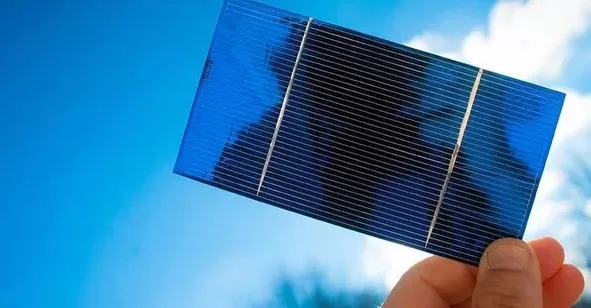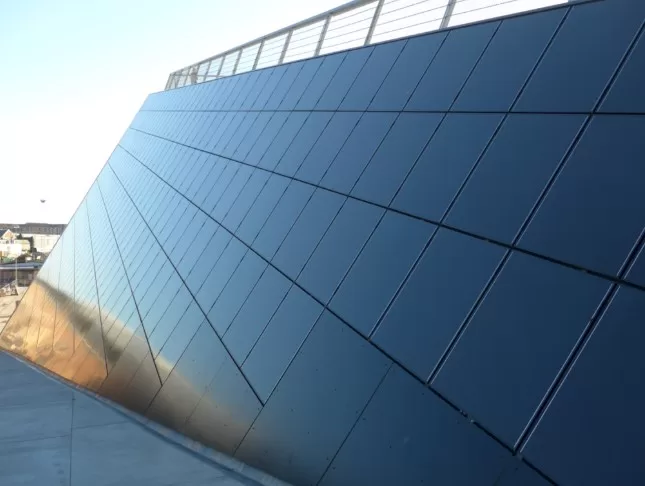Solar energy has been around for decades, and it’s no secret that it’s one of the cleanest and most abundant sources of energy. Thin-film solar panels, in particular, have been gaining traction in recent years due to their high efficiency and low cost. In this article, we’ll take a closer look at them, how they work, and their benefits and drawbacks.
What are Thin-Film Solar Panels?
As the name suggests, thin-film solar panels consist of thin layers of semiconductor material, forming the solar panels themselves.The most common materials used in thin-film solar panels are cadmium telluride (CdTe), copper indium gallium selenide (CIGS), and amorphous silicon (a-Si). Manufacturers deposit these materials onto a substrate, like glass or metal, using various techniques such as chemical vapor deposition and sputtering.

How Do Thin-Film Solar Panels Work?
Thin-film solar panels work by converting sunlight into electricity using the photovoltaic effect. When sunlight hits the semiconductor material in the solar panel, it excites electrons, causing them to move through the material. The movement of electrons generates a flow of electricity that one can capture and utilize as an energy source.
Advantages of Thin-Film Solar Panels
There are several advantages of using these panels over traditional solar panels, including:
Lower Cost
They are generally cheaper to produce than traditional solar panels, as they require less material and are easier to manufacture.
Higher Efficiency in Low Light Conditions
Thin-film solar panels are more efficient in low light conditions, such as on cloudy days or in shaded areas, than traditional solar panels. This makes them a great option for locations with less direct sunlight.
Flexible and Lightweight
This type of panels are much more flexible and lightweight than traditional solar panels, making them easier to install in a variety of locations.
More Aesthetically Pleasing
These panels often provide a more aesthetically pleasing appearance than traditional solar panels because manufacturers can create them in various colors and styles to complement a building or structure’s design.
Disadvantages of Thin-Film Solar Panels
While there are many advantages to using thin-film solar panels, there are also some drawbacks to consider, including:
Lower Efficiency
They are generally less efficient than traditional solar panels, meaning they require more surface area to generate the same amount of electricity.
Shorter Lifespan
Thin-film solar panels typically have a shorter lifespan than traditional solar panels, as they degrade more quickly over time.
Toxic Materials
Some of the materials used in thin-film solar panels, such as cadmium and lead, are toxic and can pose a risk to human health and the environment if not handled properly.
Applications of Thin-Film Solar Panels
People use them for a variety of applications, such as:
Building-Integrated Photovoltaics (BIPV)
Integrating thin-film solar panels into the design of buildings and structures allows them to provide a source of energy while simultaneously functioning as a building material. Read More
Portable Devices
They can power portable devices like smartphones and laptops, making them an excellent choice for people on the go. Read More
Large-Scale Solar Farms
Large-scale solar farms can utilize these panels to produce electricity for communities and cities.

Conclusion
Thin-film solar panels are a promising technology that has the potential to revolutionize the way we generate energy. While they have some drawbacks, their lower cost, higher efficiency in low light conditions, flexibility, and aesthetic appeal make them an attractive option for a wide range of applications. As technology continues to improve, we can expect to see more widespread adoption of thin-film solar panels in the coming years.
FAQs
Are thin-film solar panels as efficient as traditional solar panels?
These panels are generally less efficient than traditional solar panels, meaning they require more surface area to generate the same amount of electricity.
Can you use thin-film solar panels in remote locations?
Yes, you can use them to supply power in remote locations where traditional power sources aren’t accessible.
What materials do thin-film solar panels consist of?
The most common materials used in thin-film solar panels are cadmium telluride (CdTe), copper indium gallium selenide (CIGS), and amorphous silicon (a-Si).
What are the benefits of using thin-film solar panels?
Thiese panels are generally cheaper to produce than traditional solar panels, more efficient in low light conditions, more flexible and lightweight, and more aesthetically pleasing.
What are the drawbacks of using thin-film solar panels?
They are generally less efficient than traditional solar panels, have a shorter lifespan, and may contain toxic materials.
How can I make sure my thin-film solar panels receive proper disposal?
It is important to dispose of thin-film solar panels properly to prevent any harm to the environment or human health. Many solar panel manufacturers have programs in place to take back and recycle old panels. You can also check with your local recycling center to see if they accept solar panels for recycling.
Can I install thin-film solar panels myself?
Although you can technically install thin-film solar panels on your own, having a professional do the installation is strongly recommended. This ensures the panels are safely and correctly installed, optimizing their efficiency and lifespan.
How do I maintain my thin-film solar panels?
These types of solar panels require very little maintenance, but it is important to keep them clean and free of debris. You can clean them with soap and water or a specialized solar panel cleaning solution.
Are thin-film solar panels a good investment?
Determining if these panels are a good investment depends on factors like location, energy needs, and local incentives. Consult a solar professional to see if they’re suitable for you.
How do thin-film solar panels compare to other renewable energy sources?
They are just one of many renewable energy sources available, including wind power, hydro power, and geothermal power. The best renewable energy source for you will depend on your specific location and energy needs. It is recommended to consult with a renewable energy professional to determine the best option for your situation.